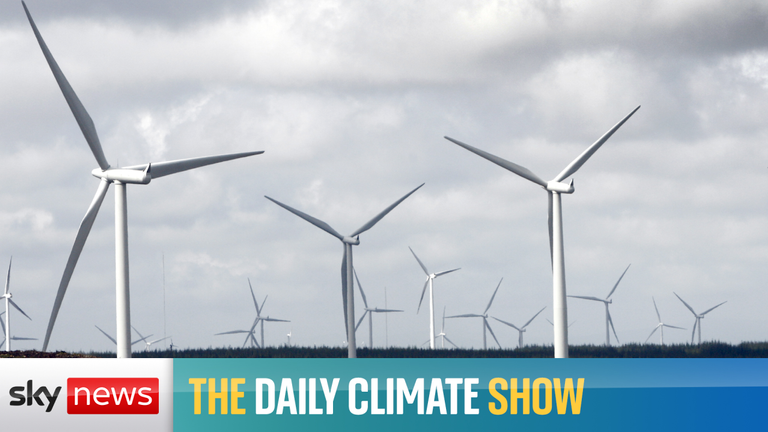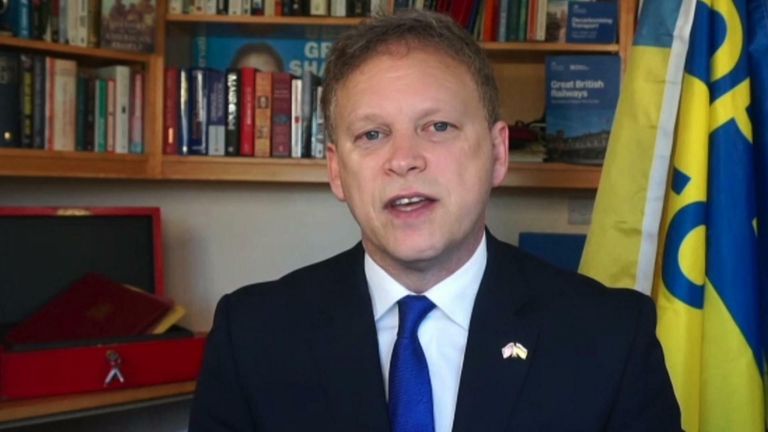Business Secretary Kwasi Kwarteng has admitted the government’s energy security strategy is “more of a medium three, four, five year answer” ahead of its reveal later today.
Speaking to Sky News, Mr Kwarteng said it is “right” to say “the strategy is more of a medium term three, four, five year answer”, suggesting there will be little in the government’s energy plan to help householders with soaring bills now.
“It’s really important that we get an energy strategy, an energy policy, that means we can have more security and independence in the year ahead,” he added.
Read more: ‘Limit to amount of taxpayer’s money’ that can be used to help with energy bills, PM says
‘Focused on net zero’
The business secretary also dismissed assertions that his department are deprioritising targets to reduce the climate crisis.
“I think that the net zero legislation is, after all, in law, we’re focused on that,” he told Sky News.
“But, of course, given what’s happening around the world, given the pressure on energy prices, we’re also doing lots of other things to make sure we get energy independence back into the UK.”
The government has promised to take back control of energy prices through boosts to nuclear, wind, solar and hydrogen in its long-awaited energy strategy.
Up to eight nuclear reactors could be delivered by 2030 – accelerating the pace from one a decade to one a year – as the UK looks to move away from oil and gas and protect itself from price volatility.
Read more: What is in the government’s energy security strategy?
The government’s ambition is for up to 24GW to come from the “safe, clean and reliable source of power” by 2050, about 25% of expected demand, with a fleet of smaller reactors forming a key part of the pipeline.
PM: Energy plans are ‘bold’
Offshore wind, solar and hydrogen also form part of the plan, which targets 95% of electricity being low carbon by 2030.
But oil and gas are also still being relied on, with a new licensing round for North Sea projects to launch this summer – recognising the importance of these fuels to energy security and that producing gas in the UK has a lower carbon footprint than doing so abroad, the government said.
Boris Johnson said the “bold plans” would see Britain “scale up and accelerate affordable, clean and secure energy made in Britain, for Britain – from new nuclear to offshore wind – in the decade ahead”.
“This will reduce our dependence on power sources exposed to volatile international prices we cannot control, so we can enjoy greater energy self-sufficiency with cheaper bills,” the prime minister said.
But Labour has said the plan will do nothing to help the rising energy costs faced by households and was in “disarray”.
Debate over onshore wind farms
On offshore wind, the strategy targets up to 50GW of capacity by 2030, which it says is more than enough to power every home in the UK, and would include 5GW from floating offshore wind in deeper seas – underpinned by planning reforms to speed up their development.
For onshore windfarms – which were recently described as “eyesores” by one cabinet member – there will be a consultation on “partnerships with a limited number of supportive communities” for the building of turbines in exchange for guaranteed lower energy bills.
The government will also look at reforming rules for installing solar panels on homes and commercial buildings, with an aim to see the current solar capacity of 14GW grow up to five times by 2035.
A target for low carbon hydrogen production capacity is being doubled to 10GW by 2030, with the aim to provide cleaner energy for industry as well as for power, transport and potentially heating.
There will also be a £30m “heat pump investment accelerator competition” to make British heat pumps – an alternative to gas boilers.
Strategy to create ‘40,000 extra jobs’
The government said the plan had been created in the face of rising global energy prices – attributed to demand bouncing back after pandemic lockdowns as well as Russia’s invasion of Ukraine.
The government also said the strategy would mean 40,000 extra jobs.
Fracking did not form part of the strategy’s headline announcements – though earlier this week the UK commissioned a survey into the industry following a moratorium in place since 2019.
Meanwhile, the Treasury is understood to have blocked a proposal to expand a scheme to upgrade household insulation and energy efficiency.
The CBI said the strategy “sets an ambitious bar for a more resilient, low carbon energy system for the future” but also said businesses needed help with soaring bills now.





